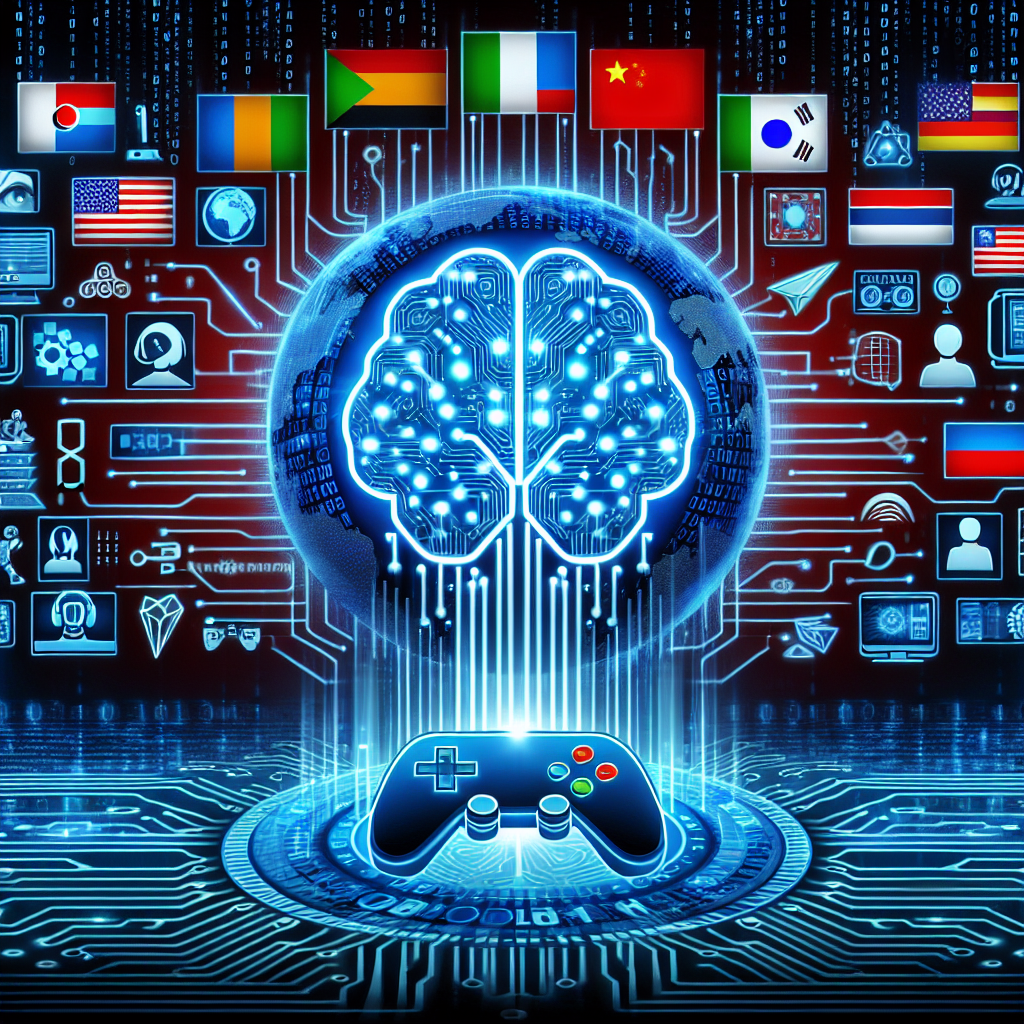In recent years, the gaming industry has experienced tremendous growth, with an increasing number of players from around the world eager to experience the latest games. With this growth comes the need for game developers to cater to a global audience by localizing their games in multiple languages. Game localization is the process of adapting a game to suit the cultural and linguistic preferences of players in different regions.
Traditionally, game localization has been a labor-intensive process that involves translating text, voiceovers, and other assets into multiple languages. However, with the advancement of artificial intelligence (AI) technology, game localization automation has become a game-changer for developers looking to streamline the localization process and reach a wider audience.
AI and Machine Translation in Game Localization
One of the key technologies driving the rise of game localization automation is machine translation powered by AI. Machine translation uses algorithms to automatically translate text from one language to another, allowing developers to localize their games quickly and efficiently.
AI-powered machine translation has come a long way in recent years, with major advancements in natural language processing and neural machine translation. These technologies enable machines to understand the nuances of language and provide more accurate translations than ever before.
Game developers can now use AI-powered machine translation tools to translate large volumes of text in a fraction of the time it would take human translators. This allows developers to release localized versions of their games more quickly and reach a larger audience.
In addition to text translation, AI can also be used to automate other aspects of game localization, such as voiceovers and subtitles. Speech recognition technology can be used to automatically generate subtitles for in-game dialogue, while voice synthesis technology can create localized voiceovers for characters.
Benefits of Game Localization Automation
There are several benefits to using AI-powered game localization automation:
1. Speed: AI-powered machine translation can translate text much faster than human translators, allowing developers to release localized versions of their games more quickly.
2. Cost-Effective: Automating the localization process can significantly reduce costs, as developers no longer need to hire a team of translators to manually translate text.
3. Accuracy: AI-powered machine translation technologies have improved significantly in recent years, providing more accurate translations that better capture the nuances of language.
4. Scalability: Game localization automation allows developers to localize their games in multiple languages simultaneously, making it easier to reach a global audience.
Challenges of Game Localization Automation
While game localization automation offers many benefits, there are also some challenges that developers need to be aware of:
1. Context: AI-powered machine translation may struggle to accurately translate text that requires cultural or contextual knowledge. Developers may need to provide additional guidance or oversight to ensure accurate translations.
2. Quality Control: While AI can provide fast translations, developers still need to ensure the quality of the localized content. This may require manual review and editing by human translators.
3. Voiceovers and Localization: While AI can automate text translation, voiceovers and other audio localization may still require human involvement to ensure accurate and natural-sounding translations.
4. Legal and Cultural Considerations: Developers need to be aware of legal and cultural considerations when localizing their games, such as complying with local regulations and avoiding offensive or culturally insensitive content.
Frequently Asked Questions
Q: Can AI-powered machine translation replace human translators entirely?
A: While AI-powered machine translation has made significant advancements in recent years, it is unlikely to completely replace human translators. Human translators are still needed to provide context, cultural knowledge, and quality control to ensure accurate and natural-sounding translations.
Q: How can developers ensure the accuracy of AI-powered translations?
A: Developers can ensure the accuracy of AI-powered translations by providing additional context and oversight to the machine translation process. Manual review and editing by human translators can also help improve the quality of the localized content.
Q: What languages can AI-powered machine translation support?
A: AI-powered machine translation can support a wide range of languages, including major languages such as English, Spanish, French, Chinese, and Japanese. Developers can also use custom models to train AI systems for specific languages or dialects.
Q: Are there any limitations to using AI-powered game localization automation?
A: While AI-powered game localization automation offers many benefits, there are some limitations to consider. AI may struggle with translating text that requires cultural or contextual knowledge, and developers may still need to provide human oversight to ensure accurate translations.
In conclusion, AI-powered game localization automation is revolutionizing the way developers localize their games for a global audience. By leveraging machine translation and other AI technologies, developers can streamline the localization process, reach a wider audience, and release localized versions of their games more quickly and efficiently. While there are challenges to overcome, the benefits of game localization automation make it an essential tool for developers looking to succeed in the global gaming market.

